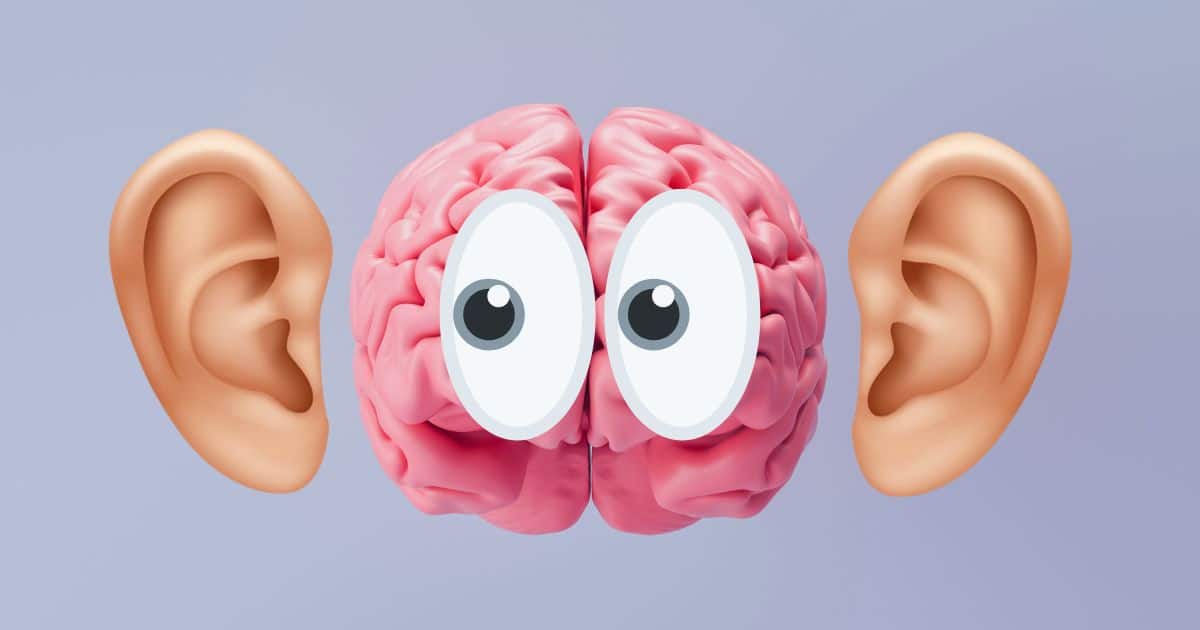
Have you ever noticed that music can make lights seem brighter, colors more vivid, or your surroundings feel sharper?
It’s not your imagination — science shows that sound directly influences vision through the brain’s sensory networks.
At Evolutionary Eye Care, we’re fascinated by how auditory and visual systems work together — revealing that your sense of sight is never working alone.
The Brain’s Sensory Symphony
Your brain doesn’t separate senses into neat boxes. Instead, it blends input from your eyes, ears, and body into a single experience.
This is called multisensory integration, and it explains why a song can enhance a movie scene or why sudden loud noises grab your visual attention instantly.
Researchers have found that the auditory cortex and visual cortex are in constant communication — adjusting focus, perception, and even reaction time based on sound.
How Sound Shapes What You See
Sound Enhances Focus
Background rhythm can help your eyes track moving objects more smoothly — a principle used in sports vision training.
Musicians and athletes often have superior visual timing because their brains synchronize sight and sound.Music Alters Visual Processing Speed
Fast-tempo music can increase reaction times, while slow music helps relax eye muscles and improve steady focus — especially during reading or computer work.Sound Can Modify Depth Perception
Experiments show that sounds with spatial cues (like panning left or right) can influence how we judge distances visually — revealing how tightly linked our hearing and sight truly are.
Therapeutic Implications: Music in Vision Rehabilitation
Neuro-optometrists are beginning to integrate rhythmic sound therapy and binaural beats into visual rehabilitation programs.
By stimulating both sides of the brain, sound-based exercises can help patients recovering from:
Concussion or traumatic brain injury (TBI)
Eye-tracking or depth-perception issues
Visual processing delays in children
This growing field — combining neuro-optometry and auditory therapy — may become a cornerstone of brain-based vision recovery in the coming decade.
Stress, Sound, and Visual Fatigue
Constant noise pollution, like traffic or loud environments, can also strain your visual system.
When your brain stays in a “high-alert” state, your pupils remain dilated longer and your focusing muscles tense up — causing headaches and blurred vision.
Listening to soothing sounds or music can trigger relaxation responses that normalize focus and eye pressure.
💡 Pro Tip: Lo-fi, ambient, or instrumental tracks can help balance visual workload during extended screen use.
Everyday Applications: Using Sound to Support Vision
You can train your eyes and brain to work more efficiently together with small daily habits:
✅ Play rhythmic background music while reading or studying.
✅ Use guided sound cues during sports or visual exercises.
✅ Take silent breaks after long work periods to give your brain sensory rest.
✅ Try sound-based meditation to relax eye strain and reduce tension.
These techniques help reset your visual circuits — improving comfort, coordination, and focus.
The Future: Cross-Sensory Vision Technology
Emerging research is merging AI eye tracking and sound feedback to assist people with visual impairments.
For example, wearable devices now translate spatial data into audio tones that guide navigation — allowing users to “hear” their surroundings with precision.
At Evolutionary Eye Care, we’re watching this frontier closely as technology continues to blur the line between sound, sight, and human adaptation.









